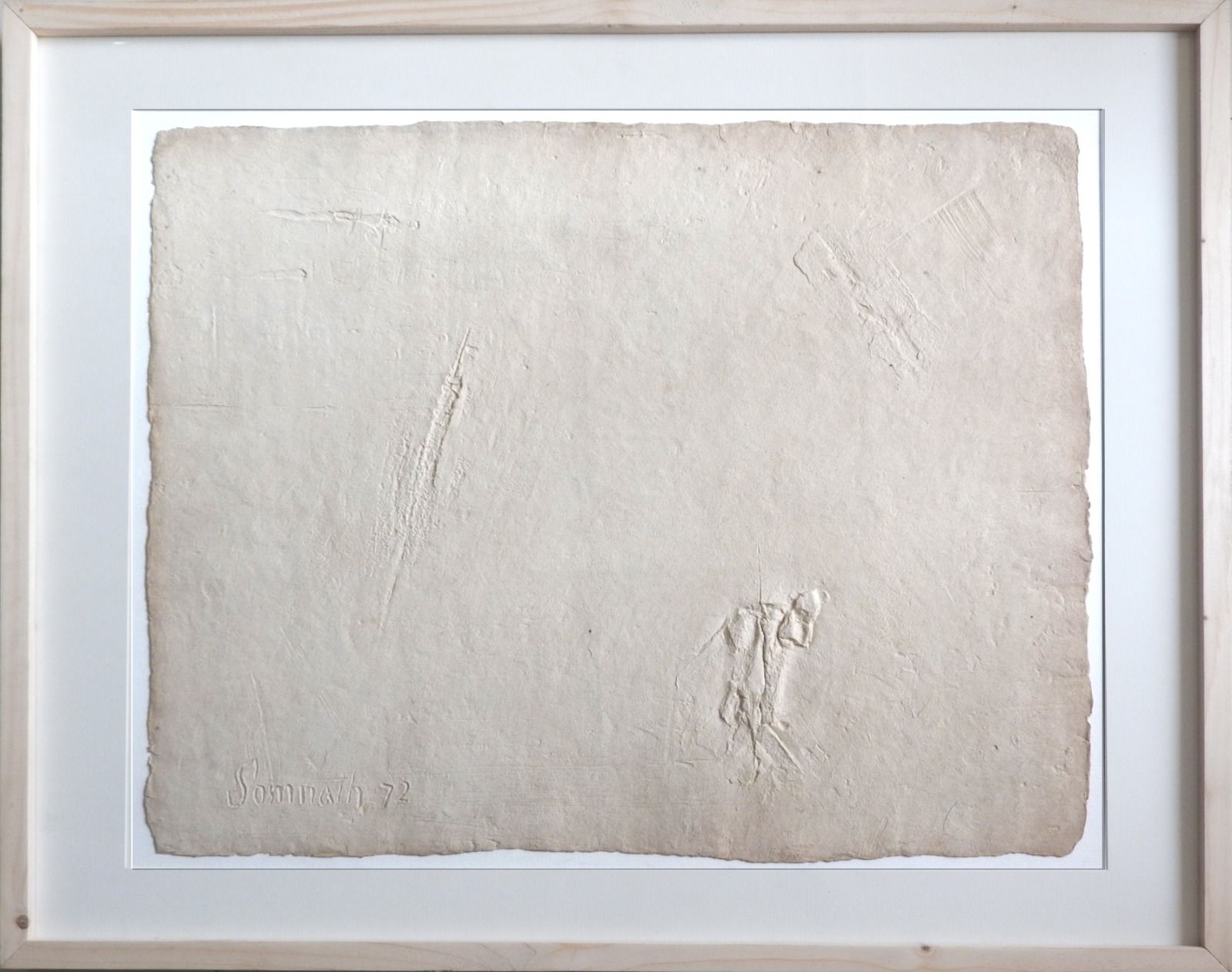News & Blog
The Silent Impressions of Trauma: Somnath Hore’s White on White (Wounds) and Its Significance in Indian Art Collecting
Somnath Hore’s White on White (Wounds) (1972), a paper pulp creation measuring 20 x 24 inches, stands as a rare and compelling example of the master artist’s profound exploration of human suffering. This work is part of Hore’s renowned Wounds series, where the paper itself becomes the embodiment of pain, allowing the artist to strip his medium down to its most basic elements while still conveying an emotionally charged narrative. For collectors, this piece represents a unique confluence of artistic innovation and socio-political commentary, placing it among the most coveted works in modern Indian art.
The Making Process
Hore pioneered the use of paper pulp to create highly textured, relief-like surfaces. The Wounds series was born out of his engagement with trauma—particularly the devastation of war, famine, and social unrest that he witnessed during the Bengal famine and other historical crises. By pressing impressions into handmade paper pulp, Hore created a deeply tactile surface that mimics the physical scars left on human bodies. The deliberate choice of white-on-white—an unconventional palette in the context of Indian modern art—intensifies the emotional resonance of the piece. The whiteness suggests purity, innocence, and vulnerability, while the wounds themselves, almost invisible at first glance, demand closer scrutiny, revealing their hidden depth and evoking the latent pain they represent.
The Rarity and Significance
This particular work, created from paper pulp, is extremely rare in the Indian art market. Paper as a medium is inherently fragile, and the preservation of such works requires meticulous care, adding to their rarity. Moreover, White on White (Wounds) is part of Hore’s lesser-known yet deeply impactful exploration of form and content through paper—a medium that is seldom used in large-scale, modernist Indian art. This rarity, combined with the work's emotional and historical weight, elevates its value significantly among collectors.
The piece also holds tremendous significance in the context of Indian art history. Hore was a founding member of the Society of Contemporary Artists (SCA), a critical collective in the Indian modernist movement. His exploration of minimalist abstraction and his focus on the human condition stand in contrast to more conventional figurative or narrative styles of his peers. For collectors, acquiring White on White is akin to owning a fragment of India’s post-colonial artistic response to global socio-political upheaval. It is a rare window into Hore’s revolutionary practice and his larger body of work, which critiqued violence, human suffering, and social inequities through a deeply personal lens.
For an art collector, this piece is not merely a visual experience but a tactile and emotional journey into the psyche of one of India’s most politically aware and empathetic artists. Given its rarity, technique, and historical significance, White on White (Wounds) is not just an artwork but a profound cultural artifact. It offers a distinctive opportunity to engage with Somnath Hore’s masterful technique and his ability to encapsulate the silent but enduring scars of humanity in an innovative and powerful way.
- Art News N Views
